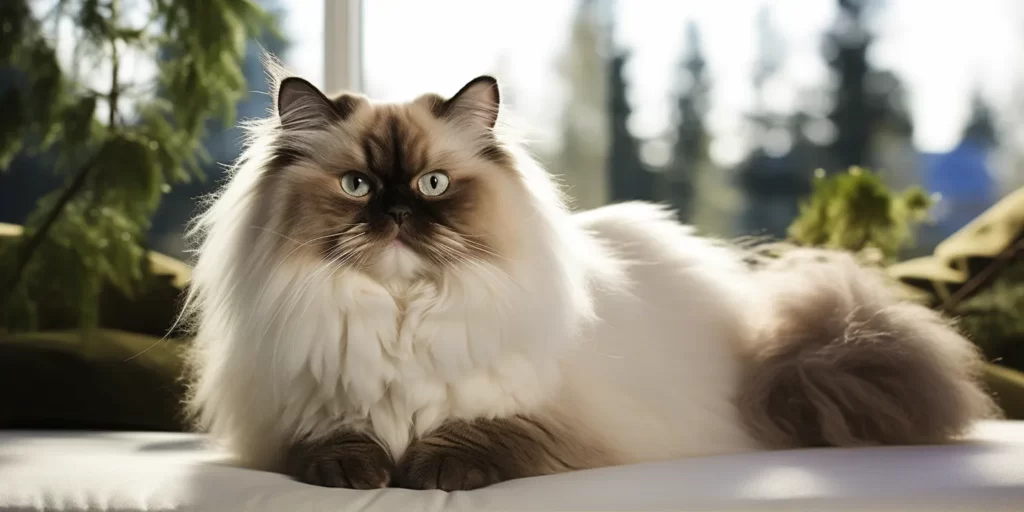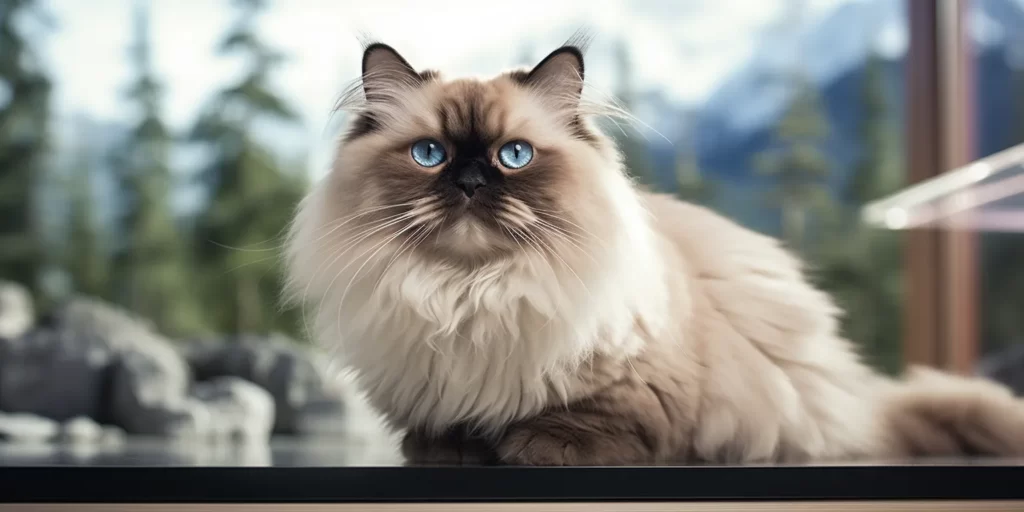When it comes to choosing a pet, understanding the difference between male and female animals can often be an important consideration. This is particularly true when selecting a variation as distinguished as the Himalayan cat, a breed beloved for its luxurious coat and captivating blue eyes.
In this blog, we delve deep into the Male vs Female Himalayan cat debate. Exploring the nuanced distinctions that may influence your decision on which gender to welcome into your home.
Understanding these differences is crucial in choosing a pet that seamlessly integrates with your lifestyle.

Visual Differences
| Male | Female | |
|---|---|---|
| Average height (adult): | 10-12 inches | 10-12 inches |
| Average weight (adult): | 9-14 pounds | 7-10 pounds |
| Lifespan: | 9-15 years | 9-15 years |
| Exercise: | Moderate | Moderate |
| Grooming needs: | High | High |
| Family-friendly: | Yes | Yes |
| Other pet-friendly: | Yes, if socialized early | Yes, if socialized early |
| Trainability: | Moderate | Moderate |
Male Breed Overview
Male Himalayan cats often stand out with their robust and larger physique compared to their female counterparts. They are known to be slightly more adventurous and boisterous, qualities that are enchanting to those who enjoy interactive pets. While generally affectionate, males can also display marking behaviors, especially if not neutered, which is why early neutering is recommended.
In terms of their social dynamics, males may have a tendency to assert dominance, which makes them captivating to watch as they interact with other pets. They possess a playful streak that doesn’t completely diminish even as they age. Despite their size, they maintain the grace characteristic of the breed, often perching in high places to observe their domain.
Furthermore, when it comes to bonding, male Himalayans are not shy about seeking attention. They are robust in their expressions of love and may form strong attachments to their human family members. This expressiveness is a double-edged sword as it can also translate into vocal demands for attention or food.

Training A Male
Males might show a slightly more independent streak during training sessions due to their confident nature. A patient approach combined with positive reinforcement can turn training into a fun and rewarding experience for both the cat and the owner.
Himalayan cats, regardless of gender, respond well to routine; establishing regular training sessions can help in minimizing any behavioral issues.
Health & Care
The fluffy coat of a Male Himalayan requires daily grooming to prevent matting and reduce hairballs. They are also predisposed to certain genetic conditions such as polycystic kidney disease and respiratory issues due to their flat faces.
Regular veterinary check-ups are essential in monitoring these conditions and ensuring that your male Himalayan remains in peak condition.
Suitable for:
Male Himalayan cats are suitable for families or individuals looking for a loving and somewhat active feline companion. Those with ample time for grooming and interaction will find males a joyous addition to their homes.
With their playful disposition, they also make good companions for children when properly introduced.

Female Breed Overview
Female Himalayan cats present a slightly more delicate physique in comparison to males; they tend to be smaller and lighter. This delicate appearance should not be mistaken for fragility—their personalities are often as robust as those of their male counterparts, though they might exhibit more grace and reservation in their behavior.
Females can be quite affectionate with their human families but may choose their moments of affection more discriminately than males. They can also be territorial, preferring a structured environment where they can establish their own space. Bonding with a female Himalayan can be a serene and rewarding experience as they tend to be intuitive and sensitive towards their owner’s emotions.
Concerning hierarchy within multi-pet households, females may seek to establish a pecking order but tend to engage less frequently in overtly dominant behavior compared to males. They maintain the breed’s characteristic poise and often exhibit maternal instincts even if they are not bred.
Training A Female
Training female Himalayans can be an exercise in finesse. They may require a gentle touch and lots of encouragement but are equally capable of learning tricks and behaviors as males. Females may prefer quieter training environments, away from too much distraction, allowing them to focus on the task at hand.

Health & Care
Similar to males, female Himalayans need attentive grooming due to their long fur. Health-wise, they share risks for certain genetic issues inherent in the breed; thus routine vet visits are just as important for them.
Special attention should be given during their estrous cycles if they are not spayed, as this period can be stressful for them.
Suitable for:
Female Himalayan cats are ideal for those seeking a regal yet affectionate pet that thrives on structure and routine. They do well in calm environments and can be doting companions for owners who provide them the security of well-established home territories.
Which One Is Right for You?
The decision between a Male vs Female Himalayan cat ultimately hinges on what you are looking for in a feline companion.
If you desire an outgoing pet with a lively personality that isn’t afraid to vocalize its needs or want a more substantial presence in your pet, a male may be your preferred choice.
On the other hand, if you value a more reserved nature with selective affection that often comes with an air of independence, a female might be more suitable.
Consider your household dynamics including other pets, children, time available for grooming, and space when making this decision. Both males and females will require your love, care, and attention but they might show their appreciation for it in different ways.

Conclusion
Whether you choose a male or female Himalayan, you will be bringing into your home a creature of majestic beauty and endearing charm. Their luxurious fur, piercing blue eyes, and gentle temperament make the Himalayan breed one of the most desirable amongst cat enthusiasts around the world.
Remember that both genders have the potential for loving and enjoyable companionship; it is simply about finding which quirks and qualities resonate best with you and your lifestyle. Ultimately, whichever gender you choose, Himalayan cats have a way of enchanting their owners with their serene yet playful personalities—making every day with them a day to look forward to.